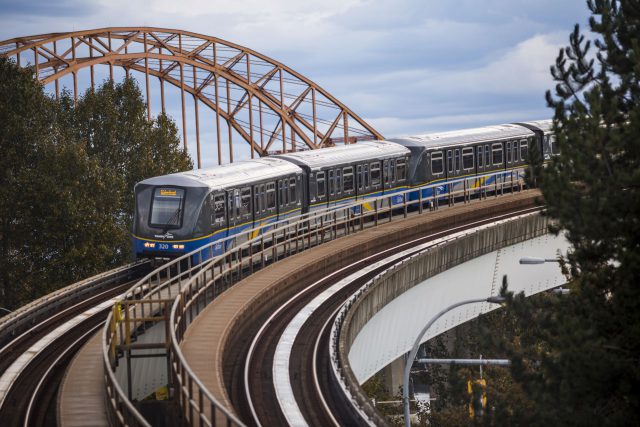Latest ridership numbers: your questions on service reductions answered
Latest ridership numbers: your questions on service reductions answered

Over the last several days, we received a high volume of questions about TransLink’s recent cost-saving measures to preserve Metro Vancouver’s transit system.
Reducing our services was a difficult decision. TransLink is losing $75 million per month with ridership down by 83%, while still providing transit services for +75,000 customers, many of which are essential workers. We continue working with our stakeholders and government authorities on a plan to address the longer-term fiscal sustainability of TransLink so that we can continue delivering our services and reintroduce our suspended services in the future.
In this post, we’ve pulled together additional numbers and details to address some of your questions.
Reductions on SkyTrain, Canada Line, WCE
Our most recent measures were introduced in the context of significant decrease in ridership across all transit modes over the last several weeks. Here is the latest data on the weekday boardings before and after the introduction of COVID-19 restrictions.
Expo-Millennium Line
82% reduction in Weekday Boardings
Early March (pre-COVID-19): 359,000
Early April (after COVID-19): 65,000
Canada Line
86% reduction in Weekday Boardings
Early March (pre-COVID-19): 143,000
Early April (after COVID-19): 20,000
SeaBus
90% reduction in Weekday Boardings
Early March Weekday Boardings (pre-COVID-19): 17,300
Early April Weekday Boardings (after COVID-19): 1,800
West Coast Express
94% reduction in Weekday Boardings
Early March Weekday Boardings (pre-COVID-19): 10,600
Early April Weekday Boardings (after COVID-19): 620
Bus Routes
TransLink’s priority was to maintain the routes that serve health facilities and hospitals, while making sure that the suspended routes have alternative service. For the 18 route suspensions that were introduced on Friday April 24:
- Over 75% of these customers would have alternate routes in the same corridor (customers using the 15, 50, 480 and R3).
- Of the remaining 25% (~800 people on weekdays), over half are on the 68 (UBC shuttle). Many of these people are in walkable distance to another bus route.
- Almost all of the other routes that will be temporarily cancelled have less than 50 boardings per weekday.
The ridership on our bus routes have decreased significantly, according to the latest published data.
Here are the details for some of our bus routes (boardings are rounded to nearest 10):
50 – Waterfront Station/False Creek South
Early March Weekday Boardings (pre-COVID-19): 3,650
Early April Weekday Boardings (after COVID-19): 790
Alternative routes: Use other downtown routes (e.g. 4, 7, 23), 84, or alternate modes
32 – Dunbar/Downtown Express
Early March Weekday Boardings (pre-COVID-19): 490
Early April Weekday Boardings (after COVID-19): 0
Alternative routes: Use routes 2 and 7
143 – SFU/Burquitlam Station
Early March Weekday Boardings (pre-COVID-19): 3,390
Early April Weekday Boardings (after COVID-19): 0
Alternative routes: Use Millennium Line and 145
R3 – Lougheed Hwy RapidBus Coquitlam Central Stn/Haney Pl
Early March Weekday Boardings (pre-COVID-19): 1,820
Early April Weekday Boardings (after COVID-19): 600
Alternative routes: Use 701
N15 – Cambie/Downtown NightBus
Early March Weekday Boardings (pre-COVID-19): 20
Early April Weekday Boardings (after COVID-19): 0
Alternative routes: Close proximity to N10 or use alternate modes of transportation
N17 – UBC/Downtown NightBus
Early March Weekday Boardings (pre-COVID-19): 50
Early April Weekday Boardings (after COVID-19): 10
Alternative routes: Use alternate modes of transportation
N22 – Macdonald/Downtown NightBus
Early March Weekday Boardings (pre-COVID-19): 10
Early April Weekday Boardings (after COVID-19): 0
Alternative routes: Use alternate modes of transportation
N24 – Lynn Valley/Downtown NightBus
Early March Weekday Boardings (pre-COVID-19): 40
Early April Weekday Boardings (after COVID-19): 20
Alternative routes: Use alternate modes of transportation






How are you calculating the bus ridership with the Compass readers turned off?
There are sensors located at the bus doors that can detect people getting on and off the bus